#wilhelm kåge
Photo
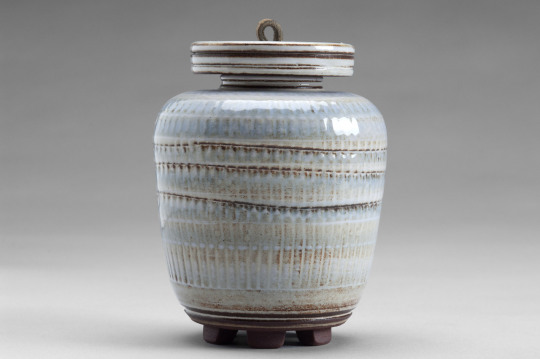
Wilhelm Kåge (Produced by Gustavsberg Studio) - Farsta Urn with Top.
3 notes
·
View notes
Photo
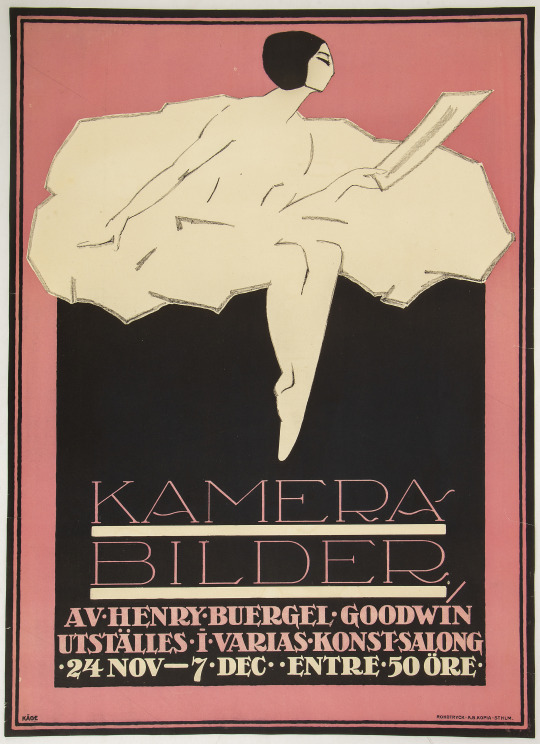
6 notes
·
View notes
Text
Wilhelm Kåge, Gustavsberg, Argenta series.
Rare blue argenta bowl with 925 sterling silver decor, ca 1930s. Designed by Wilhelm Kåge for Gustavsberg, Sweden.

#gustavsberg#Wilhelmkåge#argenta#1930s#30s#925sterlingsilver#925silver#vintage ceramics#antique ceramics#Wilhelm Kåge#sweden#swedish ceramics
4 notes
·
View notes
Text
Wilhelm Kåge Gustavsberg Sweden Argenta series
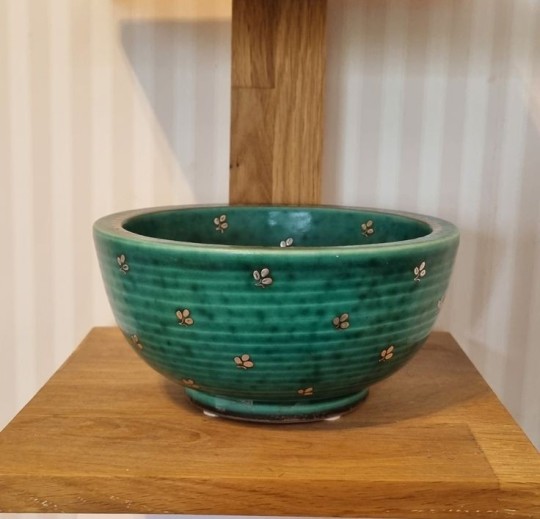
1 note
·
View note
Text
youtube
Wilhelm Peterson-Berger (1867-1942) - Arnljot, Act III Scene 17 and 18: The Death of Arnljot ·
Erland Hagegård · Edith Thallaug · Kåge Jehrlander
Stockholm Philharmonic Orchestra · Stockholm Philharmonic Male Chorus · Okko Kamu
1 note
·
View note
Text
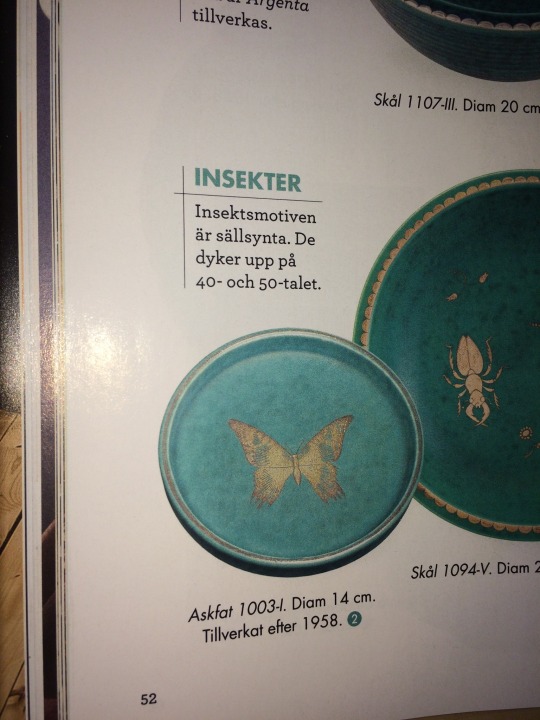
Mum got a magazine about old things in the mail today. Article about Wilhelm Kåge. Butterflies are a symbol for Vanessa💖
0 notes
Text
Larson late bird cartoon

Hans Wegner and Arne Jacobsen were exemplars of the country’s facility with wood, particularly teak. Yet Finnish glassware was pre-eminent, crafted in expressive, sculptural designs by Tapio Wirkkala and Timo Sarpaneva. Likewise, Finland produced a truly ingenious Scandinavian modern furniture designer in the architect Alvar Aalto, a master at melding function and artistic form in works like the Paimio chair. In the ’20s at the great Gustavsberg porcelain manufactory, Wilhelm Kåge introduced Scandinavian modern pieces based on influences from folklore to Cubism his skills were passed on to his versatile and inspired pupils Berndt Friberg and Stig Lindberg. Sweden was home to Bruno Mathsson, creator of the classic Grasshopper chair and Berlin daybed, but the country excelled most notably at ceramics. The work of the designers associated with this style was founded on centuries-old beliefs in both quality craftsmanship and the ideal that beauty should enhance even the humblest accessories of daily life.Įach nation produced exceptional talents in all areas of the applied arts, yet each had its forté. The gentle, organic contours that are typical of vintage Scandinavian modern furniture appear in the work of Danish, Finnish and Swedish designers not as a stylistic gesture, but rather as a practical, ergonomic - and, as importantly, elegant - response to the human form.Ĭharacterized by bold, clean lines and simple, sturdy symmetries, Scandinavian modernism is perhaps the warmest and most organic iteration of modernist design.

0 notes
Photo
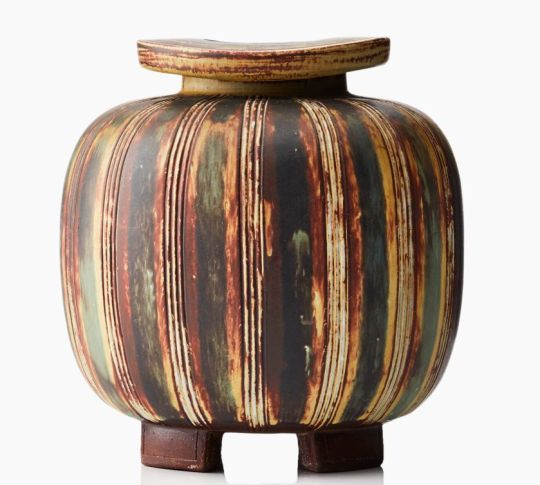
A Wilhelm Kåge stoneware jar, Gustavsberg 1956. Height 24, Diameter 24 cm.
3 notes
·
View notes
Photo
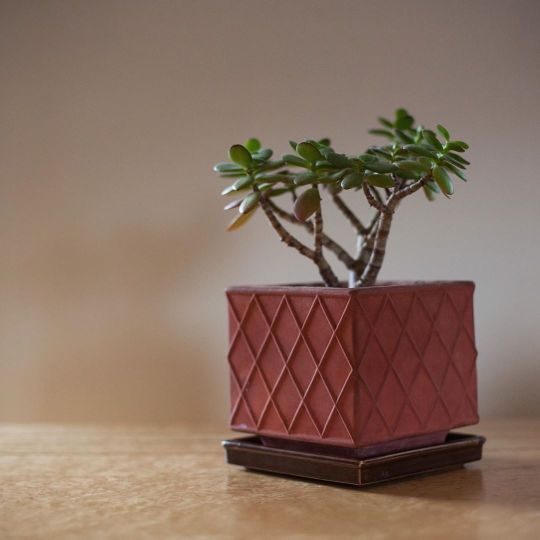
A classic succulent, Crassula ovata in a ”Planta” planter model YZ4 by Wilhelm Kåge for Gustavsberg, Sweden, 1940’s. Teracotta with an earthenwear saucer in a pullman brown glaze. https://www.instagram.com/p/B9RXLmuJ0M5/?igshid=1iqh4pgrjx7kv
1 note
·
View note
Text
Wilhelm Kåge, Gustavsberg, Argenta series
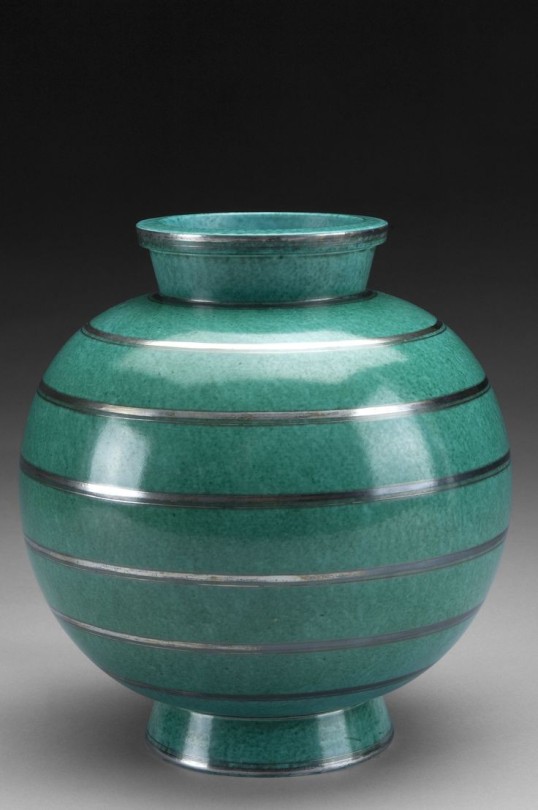
2 notes
·
View notes
Text


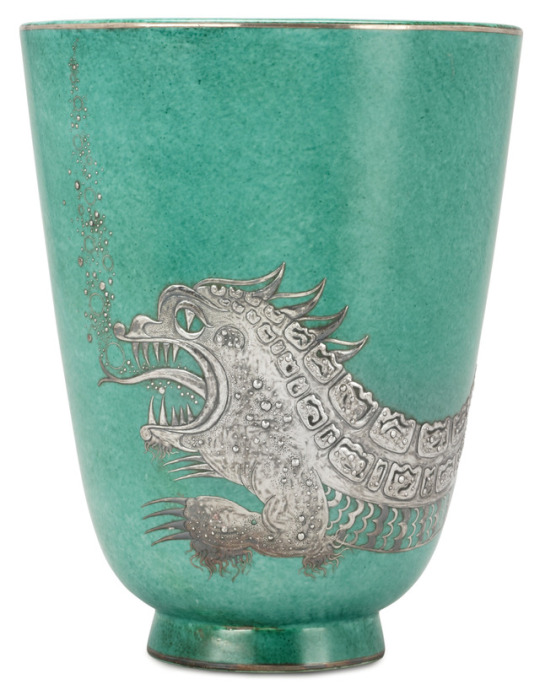

Wilhelm Kåge, Argenta Vases
Gustavsberg, 1930s-1940s
31 notes
·
View notes
Photo

Vase/bowl, Wilhelm Kåge, c. 1940, Minneapolis Institute of Art: Decorative Arts, Textiles and Sculpture
Matte white glaze with craqueler surface; Bowl with attached stepped vase; made for 'Surrea' series Wilhelm Kåge began his career as a painter, receiving his initial training at the Valand Art School in Gothenburg and later studying under Johan Rohde in Copenhagen. As Gustavsberg's earliest modern designer (and artistic director from 1917-49) he produced a number of witty and elegant designs arising from his familiarity with the modern movements in painting and sculpture. In this work he has made a sly reference to Cubism, slicing the vase form in half and combining a vase and bowl into one unit as it might appear in a Picasso still life. The Surrea series included a wide range of cut and reassembled vases and bowls, some partly colored, some left undecorated. Kåge's lively imagination brought forth an astonishing variety of forms. The angularity of several geometric vessels in the Surrea series contrasts strikingly with the "soft forms" of organically shaped tableware produced during the same period. A porcelain vase with silver inlany from another one of his lines, the Argenta series, is also on display in this exhibition.
Size: 13 x 7 1/4 in. (33.02 x 18.42 cm)
Medium: Ceramic with craqueler surface
https://collections.artsmia.org/art/40603/
0 notes
Photo

Wilhelm Kåge, Gustavsberg, Argenta Art Deco Ceramic Vase https://www.1stdibs.com/furniture/decorative-objects/vases-vessels/vases/wilhelm-kage-gustavsberg-argenta-art-deco-ceramic-vase/id-f_10456183/
0 notes


